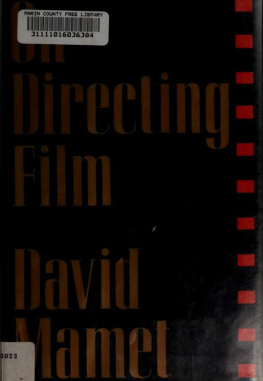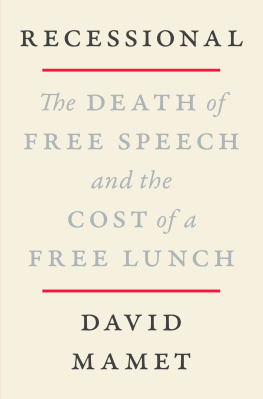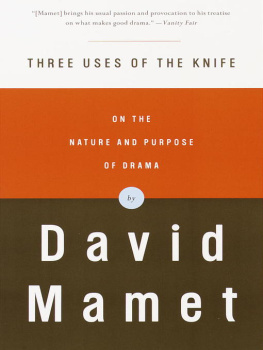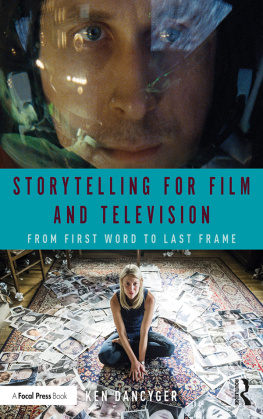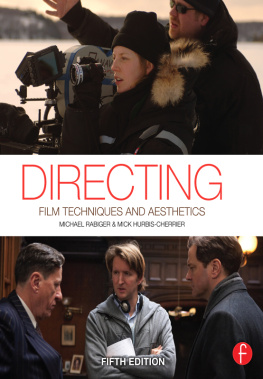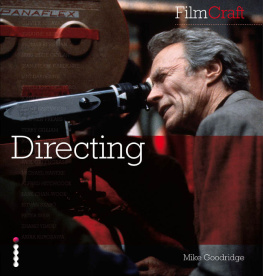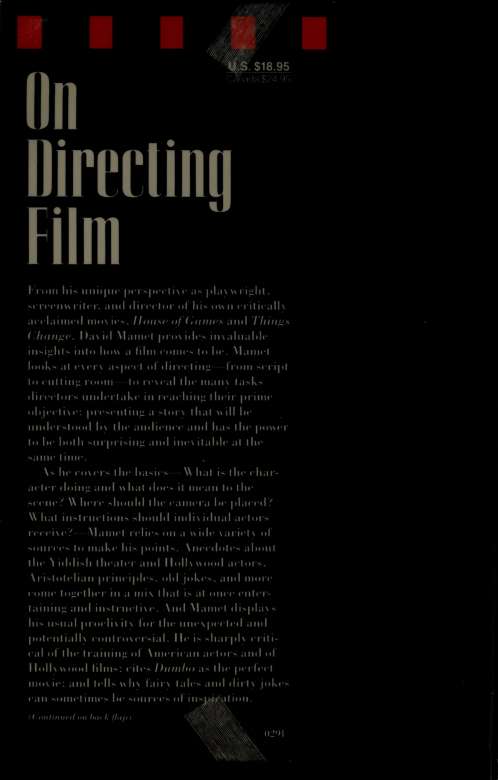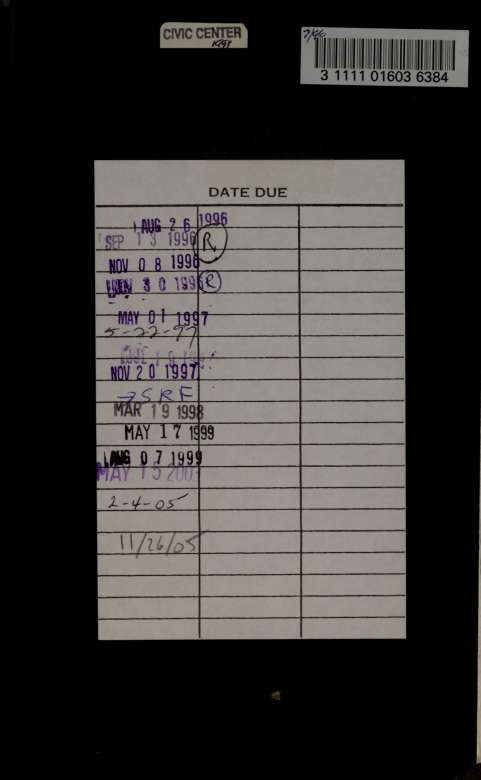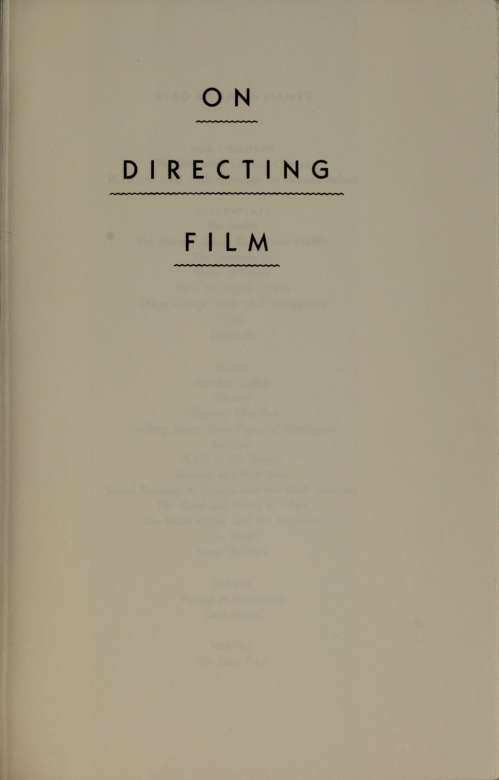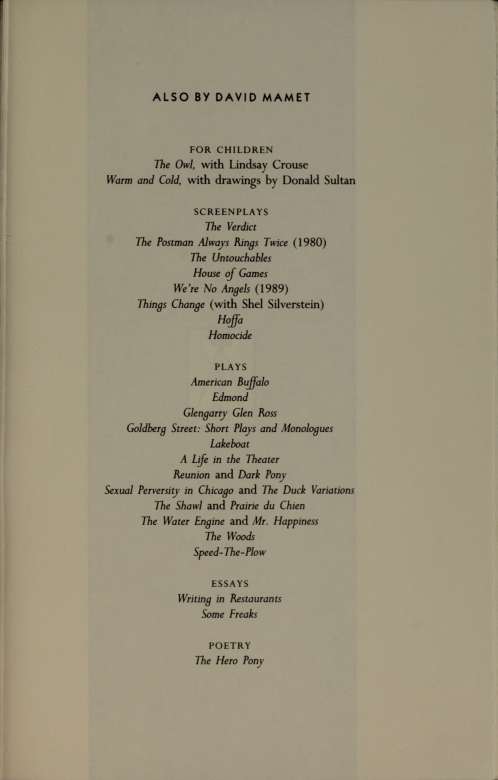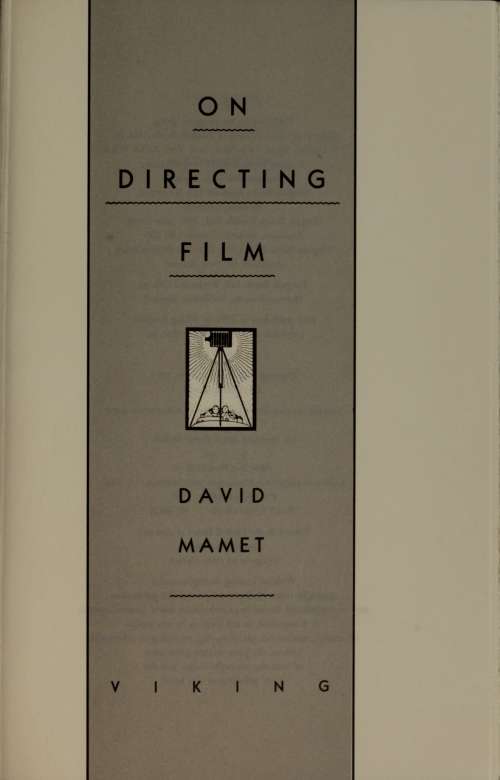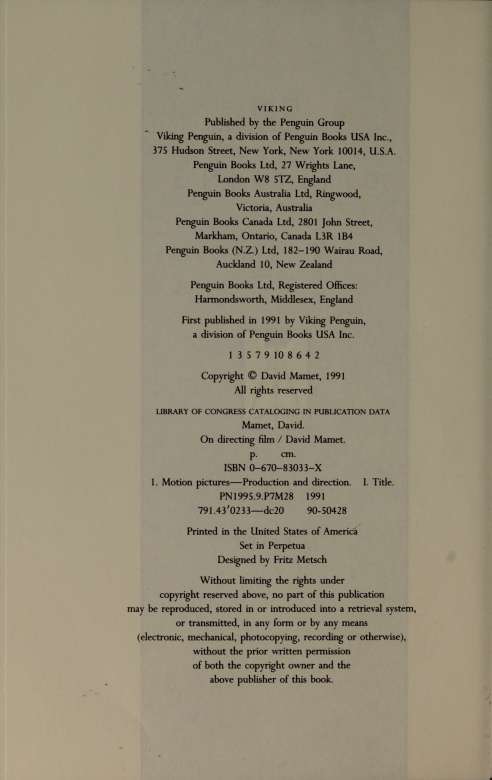This book made available by the Internet Archive.
THIS BOOK IS DEDICATED TO MIKE HAUSMAN.
They are most happy who have no story to tell.
Anthony Trollope, He Knew He Was Right
I would like to thank my editor, Dawn Seferian,
for her great patience; and Rachel Cline, Scott
Zigler, Catherine Shaddix, and Elaine Goodall for
their help in the construction of this book.
PREFACE
This book is based on a series of lectures I gave at the film school of Columbia University in the fall of 1987.
The class was in Film Directing. 1 had just finished directing my second film, and like the pilot with two hundred hours of flying time, I was the most dangerous thing around. I had unquestionably progressed beyond the neophyte stage but was not experienced enough to realize the extent of my ignorance.
1 offer the above in mitigation of a book on film directing written by a fellow with scant experience.
In support of the proposition, however, let me suggest this: that the Columbia lectures dealt with, and endeavored to ex
PREFACE
plain, that theory of film directing I had concocted out of my rather more extensive experience as a screenwriter.
There was a newspaper review lately of a book about the career of a novelist who went to Hollywood and tried to succeed at writing screenplays. He was deluded, the reviewer said, in this pursuithow could he have hoped to succeed as a screenwriter when he was nearly blind!
The reviewer exhibited a profound ignorance of the craft of screenwriting. One does not have to be able to see to write films; one has to be able to imagine.
There is a wonderful book called The Profession of the Stage Director, by Georgi Tovstonogov, who writes that a director may fall into one of the deepest pits by rushing immediately to visual or pictorial solutions.
This statement influenced and aided me greatly in my career as a stage director; and, subsequently, in my work as a screenwriter. If one understands what the scene means, and stages that, Mr. Tovstonogov was saying, one will be doing one's job for both the author and the viewer. If one rushes, first, into a pretty, or pictorial, or even descriptive staging, one may be hard-pressed to integrate that staging into the logical progression of the play. And, fiirther, while so hard-pressed, and while working to include the pretty picture, one will undoubtedly become wedded to its eventual inclusion, to the detriment of the piece as a whole.
This concept was also stated by Hemingway as, "Write the story, take out all the good lines, and see if it still works."
My experience as a director, and as a dramatist, is this: the
piece is moving in proportion to how much the author can leave out.
A good writer gets better only by learning to cut, to remove the ornamental, the descriptive, the narrative, and especially the deeply felt and meaningful. What remains? The story remains. What is the story? The story is the essential progression ojincidents that occur to the hero in pursuit of his one goal.
The point, as Aristotle told us, is what happens to the hero... not what happens to the writer.
One does not have to be able to see to write such a story. One has to be able to think.
Screenwriting is a craft based on logic. It consists of the assiduous application of several very basic questions: What does the hero want? What hinders him from getting it? What happens if he does not get it?
If one follows the norms the application of those questions will create, one is left with a logical structure, an outline, from which outline the drama will be constructed. In a play, this outline is given to the other part of the dramatistthe ego of the structuralist hands the outline to the id, who will write the dialogue.
This conceit is analogous, I think, to the case of the structuralist screenwriter who gives the dramatic outline to the director.
I saw and see the director as that Dionysian extension of the screenwriterwho would finish the authorship in such a way that (as always should be the case) the drudgery of the technical work should be erased.
PREFACE
I came to film directing as a screenwriter, and saw the craft of directing as the joyful extension of screen writing, and taught the class, and offer this book accordingly.
David Mamet Cambridge, Massachusetts Spring 1990
DIRECTING
^0^^^^^^^^^^^^^^^^^^^^^^^^^^^^^^^^^
FILM
STORYTELLING
The main questions a director must answer are: "where do I put the camera?" and "what do I tell the actors?"; and a subsequent question, "what's the scene about?" There are two ways to approach this. Most American directors approach it by saying, "let's follow the actors around," as if the film were a record of what the protagonist did.
Now, if the film is a record of what the protagonist does, it had better be interesting. That is to say, this approach puts the director in a position of shooting the film in a novel way, an interesting way, and he or she is constantly wondering, "what's the most interesting place to put the camera to film this love scene? what's the most interesting way I can shoot it plainly? what's the most interesting way that I can allow the actor to
DAVID MAMET
behave in the scene in which, for example, she proposes to him?^^
That's the way most American films are made, as a supposed record of what real people really did. There's another way to make a movie, which is the way that Eisenstein suggested a movie should be made. This method has nothing to do with following the protagonist around but rather is a succession of images juxtaposed so that the contrast between these images moves the storj forward in the mind of the audience. This is a fairly succinct rendition of Eisenstein's theory of montage; it is also the first thing I know about film directing, virtually the only thing I know about film directing.
You always want to tell the story in cuts. Which is to say, through a juxtaposition of images that are basically uninflected. Mr. Eisenstein tells us that the best image is an uninflected image. A shot of a teacup. A shot of a spoon. A shot of a fork. A shot of a door. Let the cut tell the story. Because otherwise you have not got dramatic action, you have narration. If you slip into narration, you are saying, "you'll never guess why what I just told you is important to the story." It's unimportant that the audience should guess why it's important to the story. It's important simply to tell the story. Let the audience be surprised.
The movie, finally, is much closer than the play to simple storytelling. If you listen to the way people tell stories, you will hear that they tell them cinematically. They jump from one thing to the next, and the story is moved along by the juxtaposition of imageswhich is to say, by the cut.

